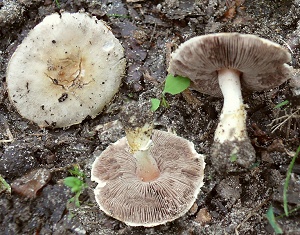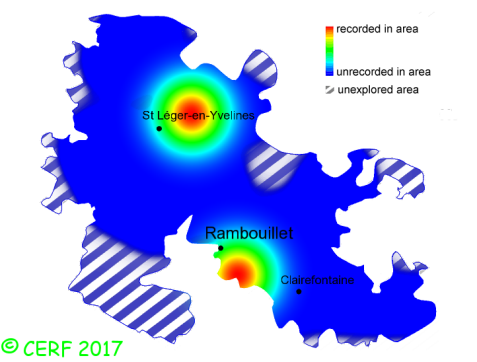| Agaricus comtulus Fr. |
|
|
|
|
|
|
The cap is white then ochre-yellow. The cap surface is smooth, not viscid nor sticky. The flesh is white, yellowing faintly and slowly when exposed to air; the odour is pleasant, of aniseed or bitter almonds; its texture is fibrous. The gills are free, crowded . The spore print is brown. This species is saprophytic. It grows on the ground. The fruiting period takes place from July to November.
Chemical tests : no reaction to Schaeffer's test. Distinctive features : small-sized, in well lit meadows; pink gills at first, not turning yellow when touched; odour of aniseed or of bitter almonds Agaricus comtulus is rare and localised in the forest of Rambouillet, and is quite rare, more generally speaking . | ||
|
page updated on 14/01/18

